How to choose your tactical military backpack?

Choosing the right backpack is important. Your bag should be the perfect size to hold all your gear, not too big or too small. It should be comfortable, durable and have the necessary features to allow you to efficiently store your essentials. With so many features, styles, and sizes to choose from, finding the right backpack can be overwhelming without the proper help. We've put together the definitive guide to help you navigate all your options to find the perfect tactical backpack.
What makes a tactical backpack?

To understand what makes a tactical backpack, it helps to know what does the word tactic mean ? Tactical backpacks are made with military-inspired utility in mind. They come with features from the armed forces such as compatibility with hydration packs, MOLLE (Modular Lightweight Load-carrying Equipment) straps and ammo pouches. All of these features are meant to provide distinct combat advantages. They are also made with a militaristic appearance, with colors like coyote brown, drab olive, or camouflage patterns. These colorways, like the patterns on military uniforms, are designed to help conceal troops in specific operational environments.
Our top 10 best military backpack brands
-
5.11 Tactical: Recognized for its durability and functionality, the 5.11 Tactical brand offers a wide range of military backpacks, designed to meet the needs of security professionals and the armed forces. Their bags stand out for their high-quality materials and multiple compartments.
-
Maxpedition: Maxpedition is renowned for its tough and durable tactical backpacks made with military grade materials. Their products offer large storage capacity and come with many convenient features, such as modular pockets and MOLLE attachment systems.
-
CamelBak: Specializing in hydration systems, the CamelBak brand also offers a line of military backpacks. Their bags incorporate water reservoirs, providing users with convenient hydration during outdoor and field activities.
-
Blackhawk: Blackhawk is a well-established brand in the tactical product industry. Their military backpacks stand out for their robustness and adaptability, with features such as modular compartments, comfortable suspension systems and customization options.
-
Hazard 4: Hazard 4 focuses on designing premium backpacks for law enforcement professionals and tactical users. Their products are loved for their durability, smart organization, and ability to adapt to different environments.
-
Condor: Condor offers a wide range of affordable and reliable military backpacks. Their bags are loved for their functionality, with thoughtful compartments and versatile storage options. Condor also offers a wide variety of sizes and styles to meet specific user needs.
-
Mystery Ranch: Known for its top quality backpacks, Mystery Ranch also offers models suitable for military requirements. Their bags stand out for their sturdy construction, comfortable carrying systems and ability to carry heavy loads ergonomically.
-
Direct Action: Direct Action focuses on designing highly functional tactical backpacks. Their products stand out for their modular features, water resistance and attention to detail. They also offer a wide range of customization options to suit individual needs.
-
Tasmanian Tiger: Tasmanian Tiger offers high quality military backpacks, made using durable and tough materials. Their products are appreciated for their ergonomics, their numerous pockets and compartments, as well as their practical functionalities adapted to missions in the field.
-
Eberlestock: Eberlestock is a brand recognized for its premium quality military backpacks, designed to provide exceptional durability and optimal functionality. Their products stand out for their innovative design, comfortable carrying system and smart storage solutions, making them a preferred choice among armed forces professionals and outdoor adventure enthusiasts.
Sizes of tactical backpacks

Not all tactical backpacks are the same size; their volume varies, and while some bags are quite small, others can be quite large. The volume of an object is the measurement of its length multiplied by the measurement of its width and height. Tactical backpacks are often measured in cubic inches, but an easier way to think of backpack size is in terms of liters. Since most packs are not perfect rectangles, liters more accurately represent their size. At the lower end, backpacks usually start at around 5 litres, with larger options of 60 liters or more. Below is a general guideline for choosing your backpack size.
EDC packages
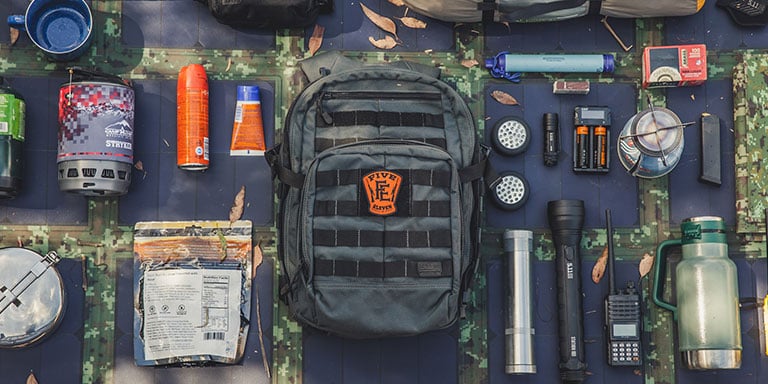
Everyday Carry Bags (or EDCs) are small tactical backpacks designed to hold only the essential items you need to carry with you day to day. Sometimes EDC packs are called 12 hour packs. These backpacks vary in size from around 5 to 35 liters.
24 hour backpacks
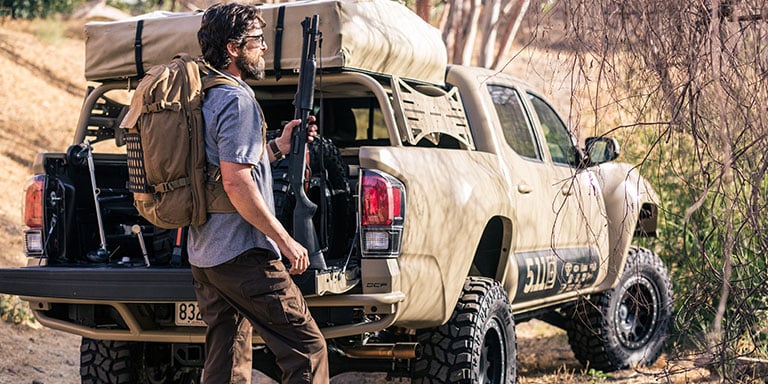
An EDC backpack is designed to carry enough gear to get you through a typical day. However, if you plan to go away for the night, you will need something a little bigger. A 24 hour pack is large enough to hold even more gear for longer missions. These tactical backpacks usually have a volume of 30-40 liters.
3 day backpacks
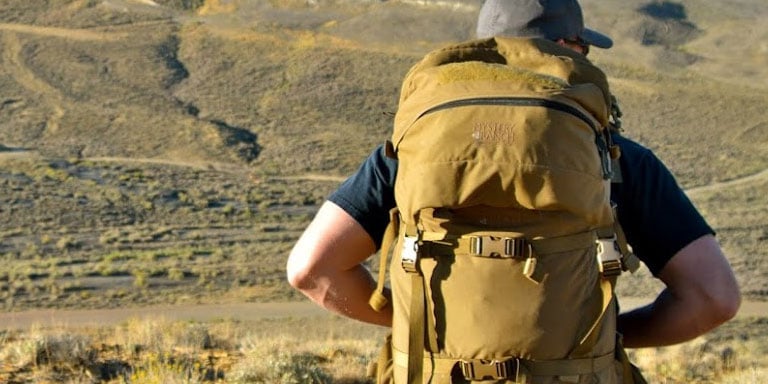
If you plan to go for a long period, it would be wise to pack a 3 day backpack. These packs can hold everything you might need over the course of several days and have many of the same features as hiking packs. Bags of this type are very large, usually 40-65 liters in volume or more.
load management
Tactical backpacks are not just designed to carry a lot, they are also designed to be carried intuitively. Improper load management can lead to severe fatigue and even serious injury. Therefore, understanding how to properly transport your equipment is absolutely essential. Here are some load management features on tactical backpacks and how to use them effectively.
Braces
Shoulder straps are the basis for carrying any backpack. You'll want to make sure they're adjustable for a custom fit. There are different shoulder strap styles to consider that affect the ergonomics of your bag.
-
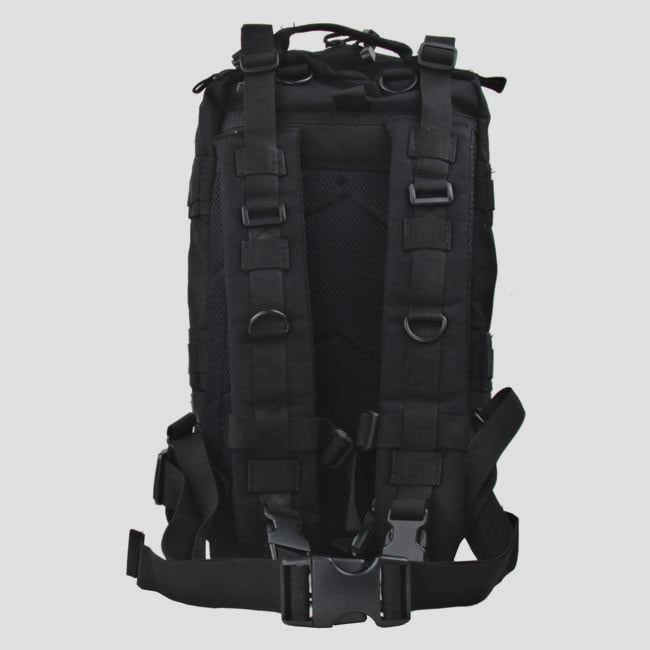
Straight braces
Straight shoulder straps are the least common type of shoulder straps on tactical backpacks. They prioritize looks over functionality and don't offer a very ergonomic fit. They are usually large, however, so they have plenty of space for padding to maximize comfort. -
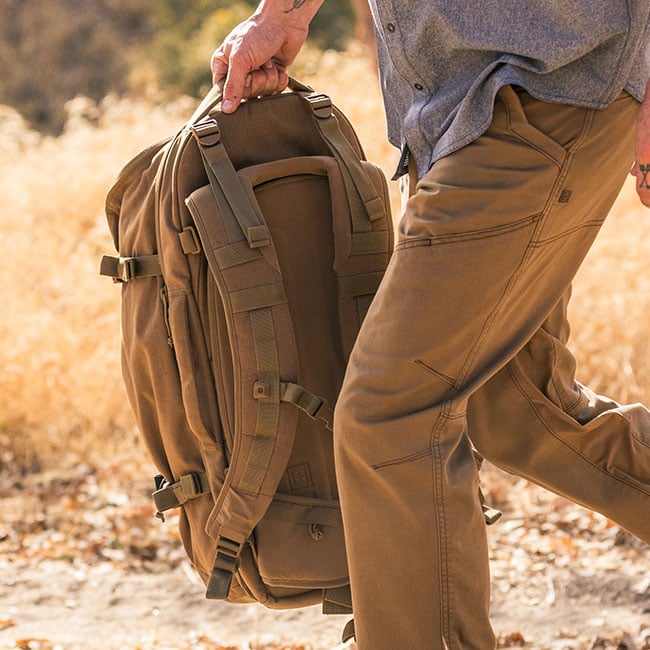
Curved straps
Curved suspenders are by far the most common type of suspenders. They are designed to mimic the natural shape of the body for a pleasant and ergonomic fit. These straps will almost always come with plenty of padding and adjustability. -
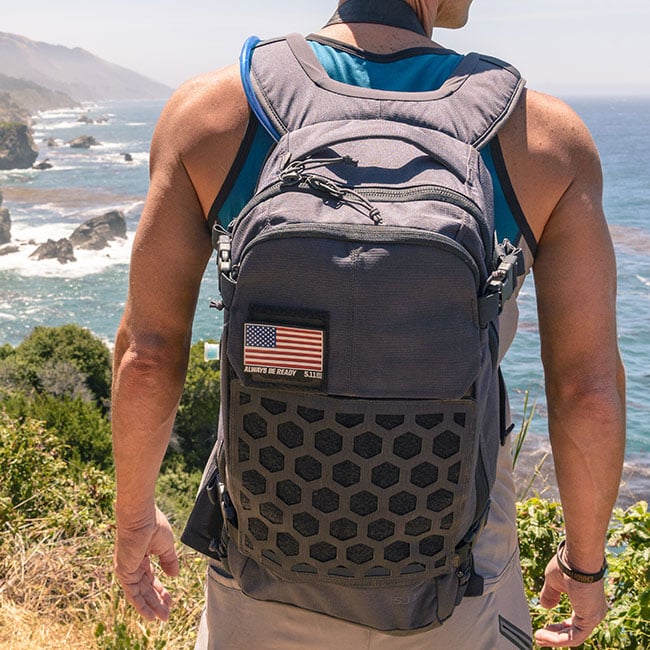
One piece suspenders
Connected to each other between the shoulder blades, the one-piece suspenders are designed with durability in mind. The bridge between the two straps provides ample surface area for the straps to attach to the bag, making them unlikely to come loose.
-
Chest straps

As you add weight to your pack, a sternum strap helps provide more comfort and stability. This extra strap changes the way the weight is distributed across your chest and shoulders for better load management. It will also prevent your bag from swaying when negotiating obstacles or rough terrain. This extra balance is important for reducing fatigue.
-
hip belts

When the weight of the bag begins to exceed twenty pounds, additional load management features become necessary to operate effectively over long distances. Hip belts help transfer the weight of a heavy pack from your back and shoulders to your hips. Adjust the backpack so that the padded section of the waist belt hugs the top of your hips. Called the iliac crest, this spot on your torso will use your core strength to support the weight of the bag more efficiently. This principle of shifting weight to your hips is more than just ergonomics - you'll be able to carry heavier weights faster and farther while expending less energy than carrying the full load on your shoulders.
Frames
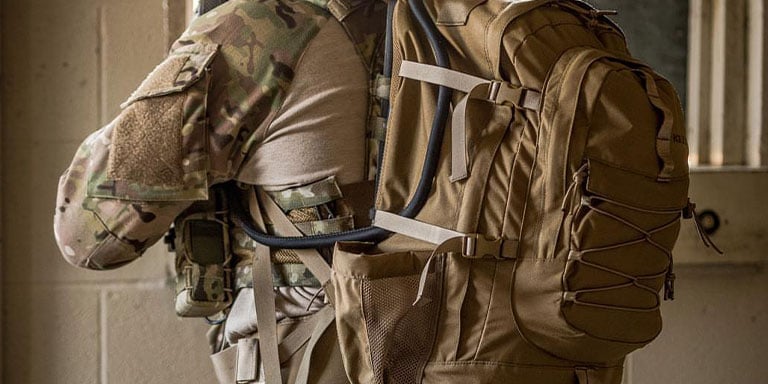
Backpack frames work in conjunction with a hip belt to further optimize the physique involved in shifting weight from your shoulders to your core. They do this by adding rigidity to the pack's structure or with components that attach directly to the hip belt. As each additional component ultimately adds weight to your pack, frames are usually constructed with very lightweight materials.
Frame sheets
Frame sheets are typically used on smaller packages as a lightweight option to provide rigidity. A simple piece of plastic placed in the back panel of a bag helps the bag hold its shape when loaded with gear. This helps relieve pressure on the shoulders and helps with the overall weight distribution of the bag.
Internal framework
Internal frames are common in big bags where a single frame sheet is inadequate for the weight carried. Typically made from aluminum rods called guylines, these frames are built into the backpack itself and attach directly to the hip belt. These stays are even more efficient in transferring the load from the shoulders to the hips.
External frame backpacks
predate internal frame options and are less common today. As the name suggests, these packs are built with the frame on the outside. One of the benefits of this design is the ability to attach items directly to the frame. This is very useful when packing game or transporting bulky items. Although generally heavier than internal frame packs, this purpose-built design is often superior for certain tasks.
Compression straps
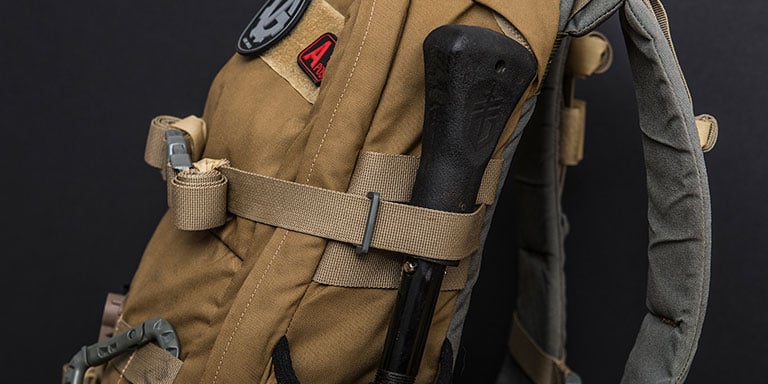
Located on the side of a tactical backpack, compression straps help flatten or expand a pack depending on the size of the load. It's always beneficial to carry the weight closer to the body, and the compression straps help pack down a half-full pack to eliminate excess space. Compressing a bag closer to your body allows for better balance, better load management, and a more comfortable overall carrying experience.
Rear cargo straps
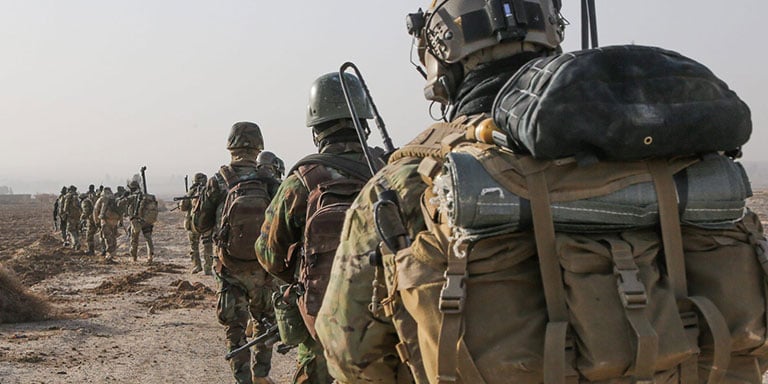
Rear cargo straps are found at the back and often at the bottom of a backpack. Their purpose is to secure items too large to fit in the main compartment such as a sleeping bag or blanket. When using rear load straps, be sure to balance the equipment you use them on with the rest of your load.
Side loading straps

Side cargo straps provide even more opportunities to store gear outside of a backpack's main compartments. Again, the key when using these straps is to make sure your load is always balanced when everything is secure.
Access and opening styles
The main purpose of a tactical backpack is to store your gear and make it easier to carry. However, how you access your gear is just as important. There are many different access and opening styles that a tactical backpack can have. Each style is designed with accessibility in mind and comes with its own unique set of benefits. Here are some of the most common types.
-

Flared openings
allow the compartments of a backpack to expand when unzipped. This allows easy and immediate access to the contents of each compartment. Ideal for keeping organized, the flared openings keep large and small items separate. -

The Clamshell Packs
Clamshell feature a three-sided zipped opening with only one side attached to the pack which acts as a hinge. Organization channels and pockets in the main compartment allow items to be grouped as needed to prevent the main pocket from becoming messy. -

Access from above
Top access openings allow retrieval of belongings from top to bottom. This style of access helps ensure that gear stays securely packed without accidentally tipping over as long as the bag remains upright. -
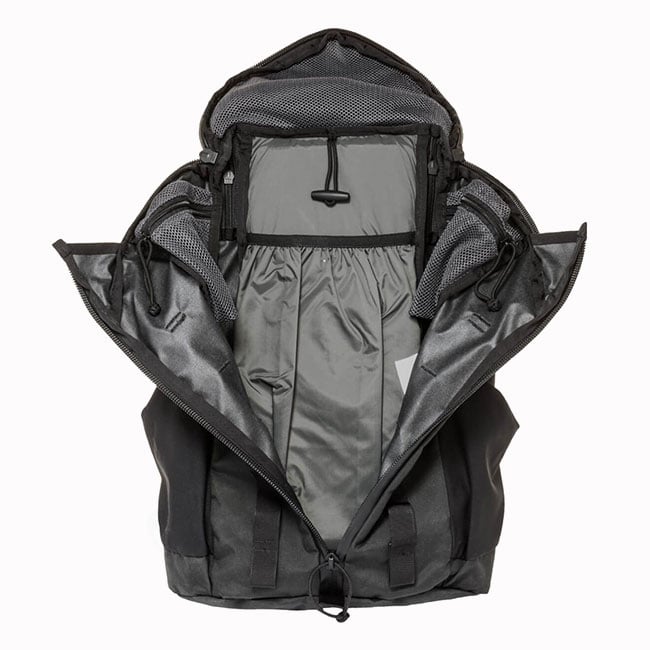
Y Access
Popularized by Mystery Ranch , the Y-style (or 3-zip) opening allows the entire front of the backpack to open, providing efficient access to gear. Very versatile, this opening style is popular among experienced backpackers. -

Front access
Instead of providing top access like most backpacks, the front access style places a zipper vertically along the front of the bag. Offering compartmentalized access to specific sets of items, this opening style is perfect for those who prioritize organization. -
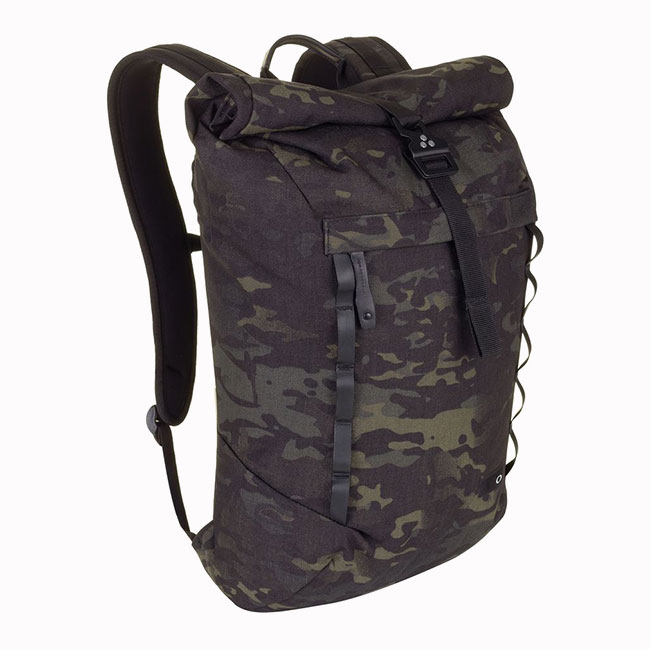
roll-top
As the name suggests, rolltop tactical backpacks feature a top flap that rolls up like a dry bag and usually closes with a buckle. Rolltop backpacks are exceptionally water resistant and can be used when weather may be an issue. -
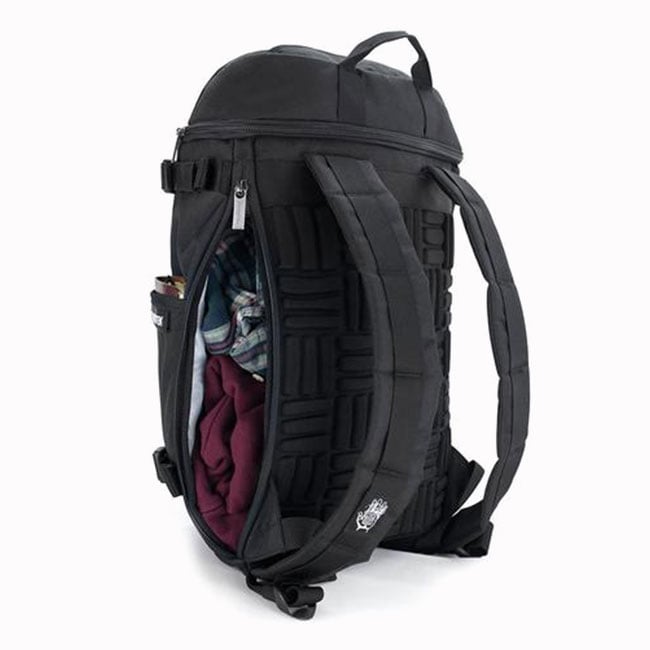
Side access
Side access zippers are usually a secondary style of opening, ideal for grabbing something from the bottom of a backpack without disturbing other contents. Side access backpacks can be rotated and opened like a shoulder bag for quick and convenient access to gear.
Organization

Organization is another important aspect of a tactical backpack. When packing gear, you shouldn't just throw things into your bag randomly. It's best to store things intuitively so you have access to items in the order you'll need them or use them. There are many ways to organize your gear to ensure easy, unhindered access.
Pockets
Pockets are the easiest way to organize your gear. They allow you to separate items by size, use, or importance for quick and convenient access. Here are some common pockets and organizational arrangements in a tactical backpack.
-
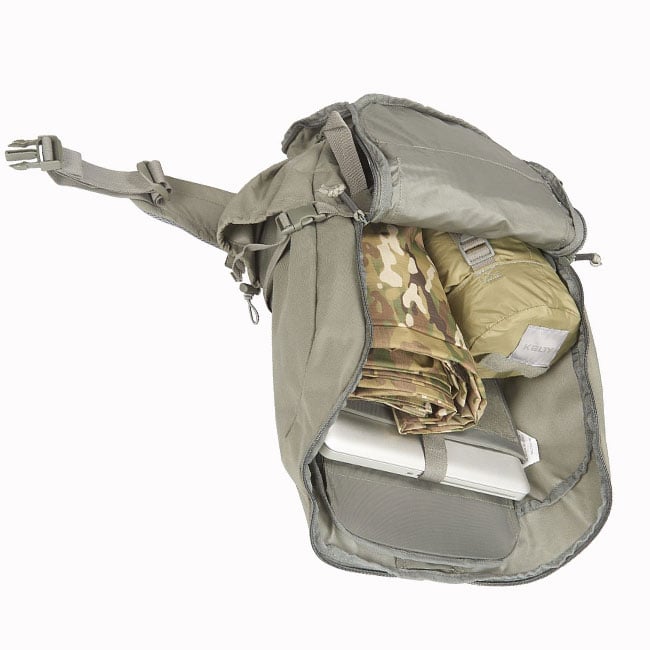
Main compartment
The main compartment is the largest part of the bag. Usually accessed by a zipper, the main compartment holds the largest and most important gear and comprises most of a backpack's volume. -

Secondary compartment
The secondary compartment is normally in front of the main compartment. This compartment holds smaller, lighter gear or an overflow from the main compartment. Secondary compartments often contain small pockets and mesh organizers inside. -

CCW Compartment
Because it is difficult to carry a holster and draw a weapon while carrying a backpack, the CCW compartment is specially designed to accommodate a weapon. These pockets are designed for discreet storage and quick access to a weapon and ammo. -

laptop sleeve
Most people own and need to carry a laptop. Backpack manufacturers reacted by creating a specific pocket to accommodate one. These sleeves provide quick and convenient access to a tablet or laptop while providing padded protection for the device. -

Mesh pockets
Mesh pockets are common on the inside and outside of a backpack. On the outside, these pockets usually hold a water bottle. When indoors, they're great for storing small gear. They are transparent, which makes it easy to see their contents. -

Glasses pouch
If you don't have a case, many tactical backpacks have a pouch attached to the main compartment to store your goggles. Often lined with microfiber fabric, these pockets prevent fragile glasses from being crushed by the other contents of the backpack. -
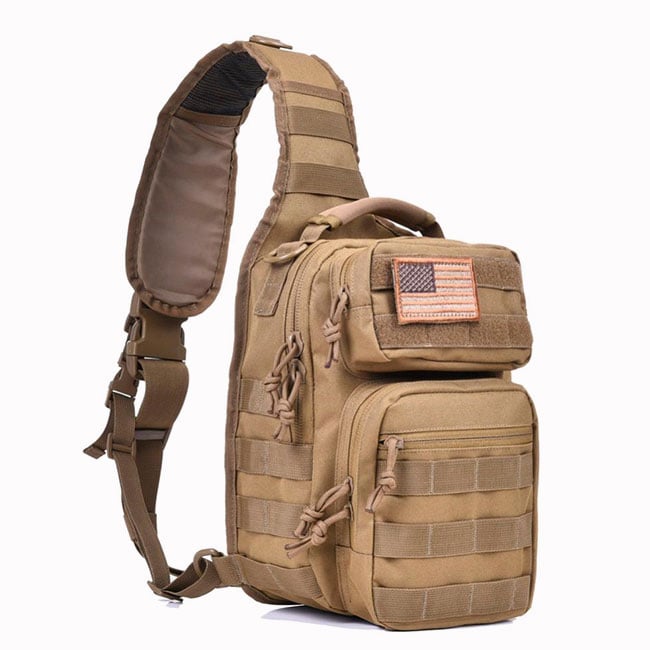
Velcro fields
Many tactical backpacks come with loop Velcro drapes to accommodate patches with hook Velcro drapes. These patches provide professional identification for police, EMS workers or the military. Other patches are made with humorous, uplifting messages. Buy Morale Patches -

Pen slots
Small items like pens are likely to fall to the bottom of a bag and get lost under larger equipment. To solve this problem, many tactical backpacks are equipped with pen slots or specific pockets for pens and small objects so that they do not get lost near the bottom. -
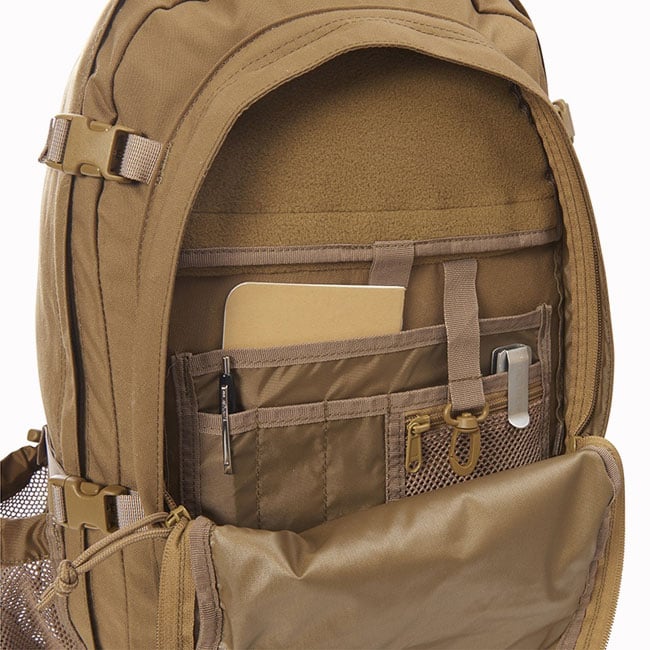
Document pockets
Document pouches are ideal for storing IDs, notebooks and even maps when cell phone reception is poor. These pockets are placed to protect important papers from bending or tearing under the weight of other equipment.
Molle webbing

Modular Light Load Carrying Equipment Webbing, or MOLLE, was introduced in the 1990s and is widely used by the United States military. MOLLE is a system of loops sewn onto a plate carrier or backpack that fits other MOLLE compatible gear. When the US Armed Forces began using equipment with MOLLE webbing, the trend shifted to tactical backpacks to provide civilians with the same level of organizational utility.
MOLLE webbing is typically used to add storage pouches to a bag. These pouches provide immediate access to gear you might need right away like magazines, radios, phones and flashlights. Instead of having to stop, pull out your pack, unzip it, and dig for extra ammo, a pouch lets you simply reach, grab, and reload. Retrieving important gear quickly can make all the difference when you're under pressure.
The MOLLE webbing provides a personalized and versatile carrying experience. If the main and secondary compartments of a bag are overloaded with equipment, the MOLLE webbing offers the possibility of additional storage space outside the backpack. It's important to be strategic when adding supplies to your pack with the MOLLE webbing. Extra pouches and pockets should be attached in such a way that your gear is always accessible, organized and balanced. Take a look at our guide to how to use MOLLE to learn how to attach pouches and other supplies to your backpack.
Hydration pockets

When carrying heavy loads, it's important to stay hydrated. This can often be difficult to do - not all backpacks have provisions for water bottles, and a water bottle stored inside a pack is not accessible without stopping . One solution to this hydration problem, which is particularly popular among members of the US military, is to use a backpack with a hydration bladder.
Hydration bladders are very popular in tactical backpacks. These rubber tanks sit in the backpack itself and can hold several liters of water at a time. A hose runs from the bladder through a channel in the backpack, and drinking from it is as simple as pulling the hose's bite valve up to your mouth. Hydration packs allow travelers to carry an easily accessible, hassle-free supply of water that can last all day. In case you are very lost and without water, be sure to learn find water in a survival situation .
Materials

Tactical backpacks are primarily used by military and law enforcement officers to help them organize, carry and protect their gear. These backpacks are susceptible to a lot of rough treatment in the course of their duties. As a result, they are made with the strongest materials available so they won't tear or fall apart in critical situations. Here are some common materials that tactical backpacks are usually made from.
Cordura
Cordura is a tough fabric that resists scuffs, abrasions and tears. It has been used by the US military for over 45 years for its incredible durability. It is found in shoes, combat shirts, pants, jackets and, of course, backpacks.
ballistic nylon
Its name alone is enough to establish the robustness of ballistic nylon. Developed by Dupont and used in WWII body armor to protect airmen from shrapnel, this heavyweight fabric is incredibly tough. Outside of backpacks, many knife holsters, belts, and watch straps are made of ballistic nylon.
Ripstop Ripstop fabrics
, as their name suggests, are rip and tear resistant. While ripstop fabrics aren't as tough as cordura or ballistic nylon, they still offer above-average durability while remaining light and thin (and therefore more comfortable).
Polyester
Used primarily in clothing, polyester does not offer the same level of resilience as ballistic nylon or cordura. However, it is remarkably lightweight, which means a polyester tactical backpack is more comfortable and easy to carry while providing adequate durability.
In short, there is no perfect or better tactical backpack. Choosing your optimal backpack depends on your personal needs and the activities you plan to do with your bag. There are a wide range of options to consider when purchasing a tactical backpack. Being knowledgeable and selective about these options is the best way to decide which bag to choose.
0 comments